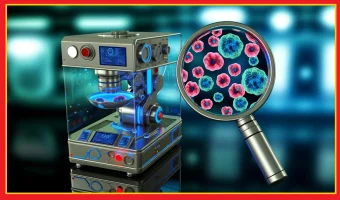detection
🧠 WHO Approves AI Tool with 92% Accuracy for Early Cancer Detection
In a groundbreaking development that could reshape global healthcare, the WHO Approves AI Tool for cancer detection. WHO has officially approved an AI-powered diagnostic tool for early cancer detection. This advanced artificial intelligence system has demonstrated an impressive 92% accuracy in identifying early-stage cancers, including breast, lung, and colorectal cancers — all of which are leading causes of mortality worldwide.
The approval is being hailed as a turning point in modern medicine, offering doctors a powerful ally in spotting cancer early, when treatment is most effective and lives are most likely to be saved.
🤖 How the AI-Powered Diagnostic Tool Works
The newly approved AI-powered diagnostic tool for early cancer detection is designed to analyze thousands of patient images, pathology slides, and medical reports in a fraction of the time it would take human experts.
By leveraging deep learning and real-time data analysis, the system is capable of:
Detecting minute anomalies in scans
Identifying biomarker patterns across multiple cancer types
Providing instant diagnostic suggestions to healthcare professionals
Reducing the chance of human error or oversight
According to WHO, the tool underwent extensive clinical trials across hospitals in the U.S., India, South Korea, and Germany before receiving approval.
🌍 A Major Boost for Global Healthcare
The AI-powered diagnostic tool for early cancer detection is expected to dramatically improve outcomes in countries where medical infrastructure is stretched or where access to specialists is limited.
Dr. Maria Elvira, WHO’s Chief of Medical Innovation, stated:
“This is a major leap in cancer diagnostics. AI is not replacing doctors — it’s equipping them to make faster, smarter decisions and save more lives.”
For low-income nations, this AI breakthrough can bridge the gap between limited resources and life-saving precision diagnostics.
📊 The Numbers That Matter
92% accuracy in detecting cancers at Stage 1 and Stage 2
47% faster than traditional lab-based analysis
Reduced false positives by 23%, preventing unnecessary treatments
Currently trained to detect 10+ types of cancer, with expansion underway.

WHO Approves AI Tool for cancer
🧬 What This Means for the Future of Cancer Diagnosis
The introduction of the AI-powered diagnostic tool for early cancer detection is part of a larger trend in medical AI — using technology to detect diseases faster and with greater accuracy.
Here’s what we can expect in the near future:
Faster diagnostics in emergency rooms and clinics
Telemedicine integration, enabling remote AI-assisted cancer screenings
Real-time monitoring for high-risk patients
Expansion into genetic analysis and personalized medicine
✅ Conclusion: A New Era in Saving Lives
With WHO’s stamp of approval, the AI-powered diagnostic tool for early cancer detection is poised to become a global game-changer. For millions of patients, this innovation means hope, early treatment, and a better chance at life.
As the world continues to embrace technology in healthcare, this is a clear sign that AI is not just the future — it’s the present.
❓ Frequently Asked Questions (FAQ)
1. What is the AI-powered diagnostic tool for early cancer detection?
It is an artificial intelligence-based system designed to identify cancer in its early stages by analyzing medical imaging, pathology slides, and patient data with high speed and precision. It assists doctors in diagnosing cancer earlier than traditional methods.
2. What has WHO approved exactly?
The World Health Organization (WHO) has officially approved the use of this AI tool after clinical trials demonstrated its effectiveness, especially in detecting early-stage cancers with 92% accuracy.
3. Which types of cancer can this AI tool detect?
The tool is currently trained to detect multiple cancers, including:
Breast cancer
Lung cancer
Colorectal cancer
Cervical cancer
Prostate cancer
Liver and pancreatic cancers (in early research stages)
4. How accurate is the AI tool?
According to WHO-verified trials, the AI tool achieved 92% accuracy in detecting early-stage cancers and significantly reduced false positives and false negatives.
5. How does the AI-powered diagnostic tool work?
It uses deep learning algorithms to scan and interpret medical images and lab data. By comparing these to millions of data points and past cases, it identifies cancerous patterns faster than human analysis.
6. Is the tool meant to replace doctors?
No. The AI tool is designed to assist and support doctors, not replace them. It offers a second opinion, improves decision-making speed, and enhances diagnostic precision.
7. Where has this tool been tested?
It underwent multi-phase clinical trials in hospitals across India, the United States, Germany, South Korea, and Brazil, with consistent high-performance results.
8. Will this tool be available globally?
Yes. With WHO approval, the tool is expected to roll out globally, starting with healthcare systems in developing countries that need better diagnostic infrastructure.
9. Can this tool be used in remote or rural areas?
Yes. A key advantage of the AI-powered diagnostic tool is that it can be used via cloud platforms and mobile devices, enabling use in rural clinics where radiologists or oncologists may not be present.
10. What does this mean for patients?
It means faster diagnosis, earlier treatment, and higher survival rates. Early detection of cancer significantly increases treatment success and reduces costs.





